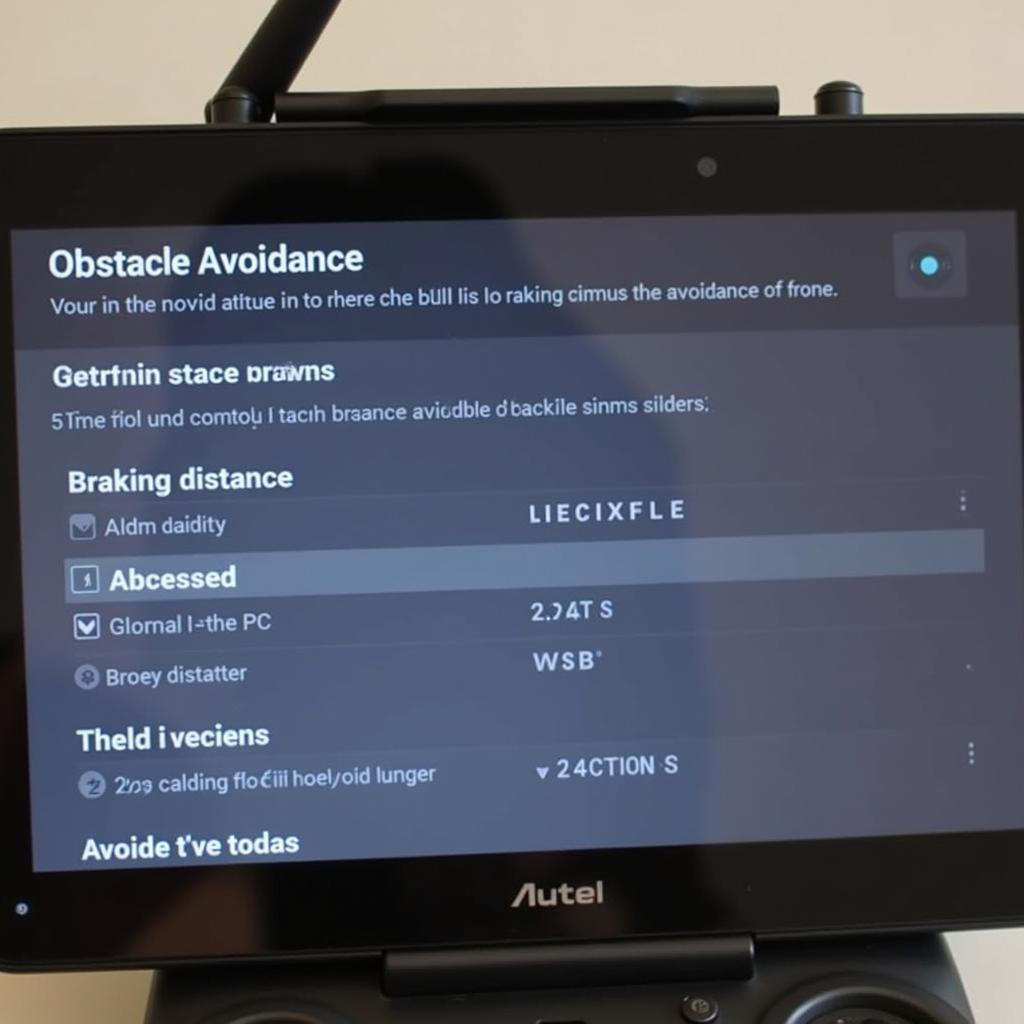Autel obstacle avoidance technology is revolutionizing how drones navigate complex environments. This article explores the intricacies of Autel’s advanced obstacle avoidance systems, examining their functionalities, benefits, and limitations, ultimately helping you make informed decisions about your next drone purchase. We’ll delve into the technology behind these systems, comparing different Autel models and offering practical tips for maximizing their effectiveness.
Understanding Autel’s Obstacle Avoidance System
Autel’s obstacle avoidance system utilizes a combination of advanced sensors and intelligent algorithms to detect and avoid obstacles in real-time. These sensors, including cameras and sonar, work together to create a 3D map of the surrounding environment. This allows the drone to perceive its surroundings, plan safe flight paths, and react dynamically to unexpected obstacles. The system’s effectiveness depends on various factors, including lighting conditions, obstacle size and texture, and the drone’s speed. Understanding these factors is crucial for maximizing the safety and performance of your Autel drone. Check out our comparison of the phantom 4 vs autel.
What makes Autel’s system stand out is its multi-directional sensing capabilities. Unlike some systems that only detect obstacles in front, Autel drones can often sense obstacles from multiple angles, including the sides and rear. This provides a greater level of protection, particularly in challenging environments like dense forests or urban landscapes. This comprehensive sensing allows for more confident and autonomous flight, enabling users to focus on capturing stunning aerial footage.
How Does Autel Obstacle Avoidance Work?
Autel’s obstacle avoidance system operates through a sophisticated process involving sensing, processing, and reacting. First, the drone’s sensors continuously scan the environment, collecting data about the distance and location of potential obstacles. This data is then processed by the drone’s onboard computer, which uses advanced algorithms to create a 3D map of the surroundings. Based on this map, the drone can determine the safest flight path, avoiding collisions with obstacles. Finally, the drone reacts to this information by adjusting its flight path in real-time, ensuring a safe and smooth flight.
Key Benefits of Autel Obstacle Avoidance
The inclusion of obstacle avoidance technology offers several significant advantages. Firstly, it greatly enhances flight safety, minimizing the risk of collisions, especially for novice pilots. This added layer of protection can prevent costly crashes and damage to the drone. Secondly, obstacle avoidance facilitates more autonomous flight, allowing users to focus on other tasks, such as capturing video or photos. This is particularly useful for professional applications like aerial photography, inspections, and surveying. For example, the autel mini nano is a great option for beginners.
 Autel EVO Nano Navigating a Complex Environment
Autel EVO Nano Navigating a Complex Environment
Comparing Autel Obstacle Avoidance Across Models
While the core principles remain consistent, the implementation of obstacle avoidance varies across different Autel drone models. Some models, like the EVO II series, offer more sophisticated systems with a wider range of sensing capabilities. Other models, like the EVO Nano series, might offer slightly less comprehensive obstacle avoidance, but still provide a valuable safety net. Understanding these differences is crucial for choosing the right Autel drone for your specific needs. You can learn more about Autel Robotics obstacle avoidance on our dedicated page: autel robotics obstacle avoidance.
Tips for Maximizing Autel Obstacle Avoidance Performance
Several factors can influence the effectiveness of Autel’s obstacle avoidance system. Ensuring adequate lighting conditions is crucial, as the sensors rely on visual data. Flying at moderate speeds allows the system more time to react to obstacles. Finally, keeping the drone’s firmware updated ensures optimal performance and access to the latest features and improvements. You can explore the autel x star premium obstacle avoidance in another article on our site.
 Autel Drone Obstacle Avoidance Settings
Autel Drone Obstacle Avoidance Settings
Conclusion
Autel obstacle avoidance is a significant advancement in drone technology, offering enhanced safety and autonomy. By understanding its functionalities, limitations, and best practices, users can fully leverage this powerful feature and capture breathtaking aerial footage with confidence. Autel’s commitment to innovation continues to push the boundaries of what’s possible in the drone industry, and their obstacle avoidance systems are a testament to that commitment.
FAQ
- What is Autel obstacle avoidance? A system using sensors and algorithms to detect and avoid obstacles.
- How does it work? Sensors collect data, the computer processes it, and the drone adjusts its flight path.
- Which Autel drones have obstacle avoidance? Most newer models, but capabilities vary.
- Does it work in all conditions? Performance is affected by lighting, obstacle type, and drone speed.
- Can I turn it off? Yes, usually through the drone’s settings menu.
- Is it foolproof? No system is perfect, always maintain situational awareness.
- How can I improve its performance? Ensure good lighting, fly at moderate speeds, and update firmware.
Need help with your Autel Drone? Contact us on WhatsApp: +1(641)206-8880, Email: [email protected] or visit us at 276 Reock St, City of Orange, NJ 07050, United States. We offer 24/7 customer support. You can also find more information on our website, such as how to fly autel without camera mounted.


